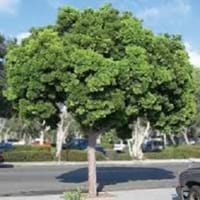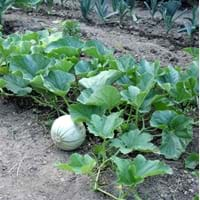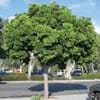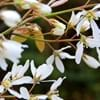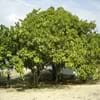Life Span
Annual and Perennial
Annual
Origin
Eastern Africa, Middle Africa
Hybrid origin, Africa
Types
Not Available
Not Available
Habitat
Broad-Leaved Forests, Open areas, Suburban areas, Tropical regions
along watercourse, Banks, Barren waste areas
USDA Hardiness Zone
9-11
Not Available
Sunset Zone
H1, H2, 8, 9, 13, 14, 15, 16, 17, 18, 19, 20, 21, 22, 23, 24
2a, 2b, 3a, 3b, 4, 5, 6, 7, 8, 9, 10, 11, 12, 13, 14, 15, 16, 17, 18, 19, 20, 21, 22, 23, 24
Habit
Upright/Erect
Prostrate/Trailing
Flower Color
Light Green, Tan
Yellow
Flower Color Modifier
Bicolor
Bicolor
Fruit Color
Light Green
Green, Yellow green
Leaf Color in Spring
Green, Blue Green
Green
Leaf Color in Summer
Green, Blue Green
Green
Leaf Color in Fall
Green, Blue Green
Green, Yellow green
Leaf Color in Winter
Green, Blue Green
Light Green
Leaf Shape
Pinnate
Heart-shaped
Plant Season
Spring, Summer, Fall, Winter
Summer, Fall
Sunlight
Full Sun, Partial Sun, Partial shade
Full Sun
Growth Rate
Medium
Very Fast
Type of Soil
Clay, Loam
Loam
The pH of Soil
Acidic, Neutral
Neutral
Soil Drainage
Well drained
Well drained
Bloom Time
Early Spring
Early Summer, Summer, Indeterminate
Tolerances
Not Available
Drought
Where to Plant?
Ground
Ground
How to Plant?
Grafting, Seedlings, Stem Planting, Transplanting
Seedlings
Plant Maintenance
Medium
Medium
Watering Requirements
Average Water Needs
Reduce watering once fruit are growing, Water in the early morning hours
In Summer
Lots of watering
Lots of watering
In Spring
Moderate
Moderate
In Winter
Average Water
Average Water
Soil pH
Acidic, Neutral
Neutral
Soil Type
Clay, Loam
Loam
Soil Drainage Capacity
Well drained
Well drained
Sun Exposure
Full Sun, Partial Sun, Partial shade
Full Sun
Pruning
Remove damaged leaves, Remove dead branches, Remove dead leaves
Remove damaged leaves, Remove dead branches, Remove dead leaves
Fertilizers
All-Purpose Liquid Fertilizer
All-Purpose Liquid Fertilizer
Pests and Diseases
Red blotch
Aphids, Cucumber beetles, Fusarium wilt
Plant Tolerance
Drought
Drought
Flowers
Insignificant
Showy
Flower Petal Number
Not Available
Single
Foliage Texture
Bold
Coarse
Foliage Sheen
Glossy
Matte
Allergy
no allergic reactions
Dizziness, Mouth itching, Nausea
Aesthetic Uses
Showy Purposes
Not Used For Aesthetic Purpose
Beauty Benefits
Not Available
Good for skin, Hair Conditioner, Stops hair loss
Environmental Uses
Air purification
Air purification
Medicinal Uses
No Medicinal Use
Antitussive, Digestive, Diuretic, Emetic, Febrifuge, Stomachic
Part of Plant Used
Bark
Fruits, Seeds
Other Uses
Wood is used for making furniture, Wood log is used in making fences
For making oil for cosmetics
Used As Indoor Plant
No
No
Used As Outdoor Plant
Yes
Yes
Garden Design
Container, Feature Plant, Hedges, Screening / Wind Break, Tropical
Edible, Fruit / Fruit Tree, Herb / Vegetable, Vine
Botanical Name
AFROCARPUS gracilior
CUCUMIS melo 'Burpees Early Hybrid'
Common Name
East African Yellowwood, Fern Pine
Crenshaw Melon
In Hindi
फर्न पाइन
खरबूजा
In German
Fern Pinien
Zuckermelone
In Spanish
pino helecho
Crenshaw Melon
In Greek
Fern πεύκο
Crenshaw Melon
In Portuguese
pinho Fern
Crenshaw Melon
In Polish
Fern sosna
Crenshaw Melon
In Latin
Fern pinus
Crenshaw Melon
Phylum
Not Available
Magnoliophyta
Class
Pinopsida
Magnoliopsida
Order
Pinales
Cucurbitales
Family
Podocarpaceae
Cucurbitaceae
Clade
Angiosperms, Monocots
Angiosperms, Eudicots, Rosids
Tribe
Not Available
Not Available
Subfamily
Faboideae
Not Available
Number of Species
Not Available
Importance of Fern Pine and Crenshaw Melon
Want to have the most appropriate plant for your garden? You might want to know the importance of Fern Pine and Crenshaw Melon. Basically, these two plants vary in many aspects. Compare Fern Pine and Crenshaw Melon as they differ in many characteristics such as their life, care, benefits, facts, etc. Every gardener must at least have the slightest clue about the plants he wants to plant in his garden. Compare their benefits, which differ in many ways like facts and uses. The medicinal use of Fern Pine is No Medicinal Use whereas of Crenshaw Melon is Antitussive, Digestive, Diuretic, Emetic, Febrifuge and Stomachic. Fern Pine has beauty benefits as follows: Not Available while Crenshaw Melon has beauty benefits as follows: Not Available.
Compare Facts of Fern Pine vs Crenshaw Melon
How to choose the best garden plant for your garden depending upon its facts? Here garden plant comparison will help you to solve this query. Compare the facts of Fern Pine vs Crenshaw Melon and know which one to choose. As garden plants have benefits and other uses, allergy is also a major drawback of plants for some people. Allergic reactions of Fern Pine are no allergic reactions whereas of Crenshaw Melon have Dizziness, Mouth itching and Nausea respectively. Having a fruit bearing plant in your garden can be a plus point of your garden. Fern Pine has showy fruits and Crenshaw Melon has showy fruits. Also Fern Pine is not flowering and Crenshaw Melon is not flowering . You can compare Fern Pine and Crenshaw Melon facts and facts of other plants too.
